Nasturtium, Common Nasturtium, Indian Cress, Mexican Cress, Peruvian Cress, Garden Nasturtium
Handsome and easy-going, Tropaeolum majus (Nasturtium) is a popular annual or short-lived perennial with creeping or sprawling stems that command attention in any landscape. Blooming from winter through spring in mild winter areas and from summer to fall in colder climates, Nasturtium boasts a profusion of long-stalked, funnel-shaped flowers, about 2-3 in. wide (5-7 cm), ranging in color from creamy white to orange, mahogany, red, and yellow. The blossoms may be single or double and have an unusual and refreshing fragrance. They stand out against the pretty foliage of rounded, parasol-like leaves.
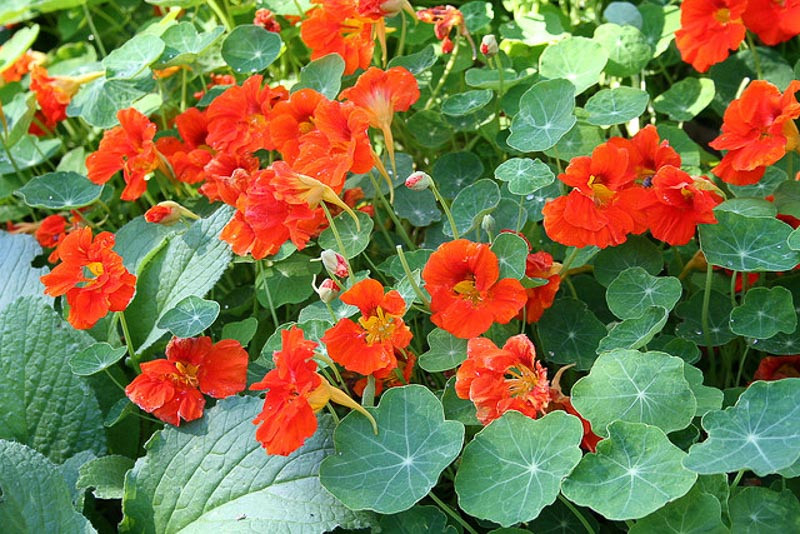
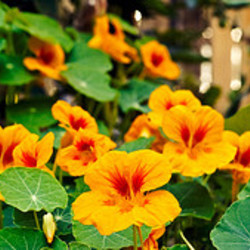 |
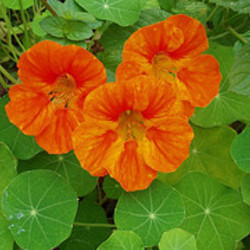 |
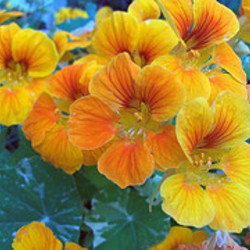 |
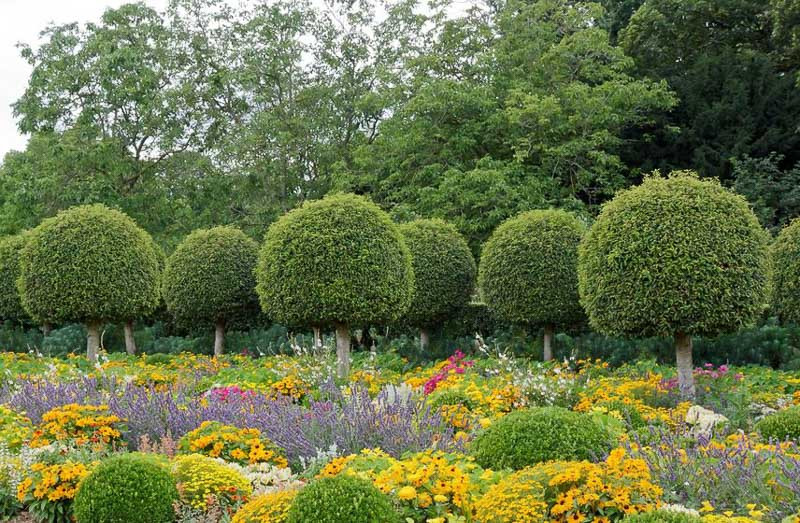
Nasturtium ‘Alaska Hybrids’ – mixed with white spotted leaves, compact, 12-15 in. (30-37 cm)
Nasturtium ‘Cherry Rose Jewel’ – cherry rose, semi-double green compact, 12-18 in. (30-45 cm)
Nasturtium ‘Double Gleam Hybrids’ – mix, semi-double, fragrant green semi-trailing, 12 in. (30 cm)
Nasturtium ‘Empress of India’ – crimson purplish compact, 12 in. (30 cm)
Nasturtium ‘Gleam Hybrids’ – mix, double green semi-trailing, 2 in. (30 cm)
Nasturtium ‘Hermine Grasshof’ – bright red, double green compact, 9-12 in. (22-30 cm)
Nasturtium ‘Jewel of Africa’ – mix marbled vine, 8 ft. (240 cm)
Nasturtium ‘Jewel Hybrids’ – mix, semi to double green compact, 12 in. (30 cm)
Nasturtium ‘Moonlight’ – light yellow-green vine, 6 ft. (180 cm)
Nasturtium ‘Park’s Fragrant Giants’ mix green trailing vine
Nasturtium ‘Peach Melba’ – yellow, red blotched green compact, 12 in. (30 cm)
Nasturtium ‘Salmon Baby’ – salmon pink, fringed green compact, 12 in. (30 cm)
Nasturtium ‘Strawberries and Cream’ – yellow, red blotched green compact, 9-12 in. (22-30 cm)
Nasturtium ‘Strawberry Ice’ – gold, red blotched bluish compact, 9 in. (22 cm)
Nasturtium ‘Tip Top Hybrids’ – mix green compact, 8 in. (20 cm)
Nasturtium ‘Tom Thumb Hybrids’ – mix green compact, 8-10 in. (20 25 cm)
Nasturtium ‘Whirlybird Cream’ – creamy yellow, semi-double green compact, 9-12 in. (22-30 cm)
Nasturtium ‘Whirlybird Hybrids’ – mix, semi-double green compact, 9-12 in. (22-30 cm)
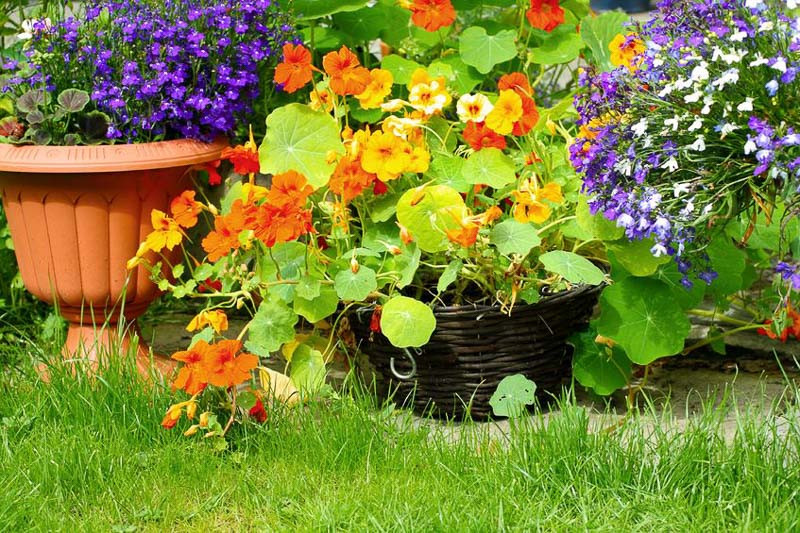
| Hardiness |
2 - 11 |
|---|---|
| Heat Zones |
1 - 12 |
| Climate Zones | 1, 1A, 1B, 2, 2A, 2B, 3, 3A, 3B, 4, 5, 6, 7, 8, 9, 10, 11, 12, 13, 14, 15, 16, 17, 18, 19, 20, 21, 22, 23, 24, A1, A2, A3, H1, H2 |
| Plant Type | Annuals |
| Plant Family | Tropaeolaceae |
| Genus | Tropaeolum |
| Common names | Nasturtium |
| Exposure | Full Sun, Partial Sun |
| Season of Interest |
Summer (Early, Mid, Late) Fall |
| Height |
1' - 10' (30cm - 3m) |
| Spread |
1' - 3' (30cm - 90cm) |
| Spacing |
12" - 18" (30cm - 50cm) |
| Maintenance | Low |
| Water Needs | Average |
| Soil Type | Chalk, Loam, Sand |
| Soil pH | Acid, Alkaline, Neutral |
| Soil Drainage | Well-Drained |
| Characteristics | Cut Flowers, Fragrant, Showy |
| Tolerance | Drought, Deer |
| Attracts | Bees, Butterflies, Hummingbirds |
| Garden Uses | Beds And Borders, Edging, Ground Covers, Hanging Baskets, Patio And Containers, Walls And Fences |
| Garden Styles | Gravel and Rock Garden, Informal and Cottage, City and Courtyard |
| Hardiness |
2 - 11 |
|---|---|
| Heat Zones |
1 - 12 |
| Climate Zones | 1, 1A, 1B, 2, 2A, 2B, 3, 3A, 3B, 4, 5, 6, 7, 8, 9, 10, 11, 12, 13, 14, 15, 16, 17, 18, 19, 20, 21, 22, 23, 24, A1, A2, A3, H1, H2 |
| Plant Type | Annuals |
| Plant Family | Tropaeolaceae |
| Genus | Tropaeolum |
| Common names | Nasturtium |
| Exposure | Full Sun, Partial Sun |
| Season of Interest |
Summer (Early, Mid, Late) Fall |
| Height |
1' - 10' (30cm - 3m) |
| Spread |
1' - 3' (30cm - 90cm) |
| Spacing |
12" - 18" (30cm - 50cm) |
| Maintenance | Low |
| Water Needs | Average |
| Soil Type | Chalk, Loam, Sand |
| Soil pH | Acid, Alkaline, Neutral |
| Soil Drainage | Well-Drained |
| Characteristics | Cut Flowers, Fragrant, Showy |
| Tolerance | Drought, Deer |
| Attracts | Bees, Butterflies, Hummingbirds |
| Garden Uses | Beds And Borders, Edging, Ground Covers, Hanging Baskets, Patio And Containers, Walls And Fences |
| Garden Styles | Gravel and Rock Garden, Informal and Cottage, City and Courtyard |
How many Tropaeolum majus (Nasturtium) do I need for my garden?
| Plant | Quantity | |
|---|---|---|
| Tropaeolum majus (Nasturtium) | N/A | Buy Plants |
Create a membership account to save your garden designs and to view them on any device.
Becoming a contributing member of Gardenia is easy and can be done in just a few minutes. If you provide us with your name, email address and the payment of a modest $25 annual membership fee, you will become a full member, enabling you to design and save up to 25 of your garden design ideas.
Join now and start creating your dream garden!
Create a membership account to save your garden designs and to view them on any device.
Becoming a contributing member of Gardenia is easy and can be done in just a few minutes. If you provide us with your name, email address and the payment of a modest $25 annual membership fee, you will become a full member, enabling you to design and save up to 25 of your garden design ideas.
Join now and start creating your dream garden!